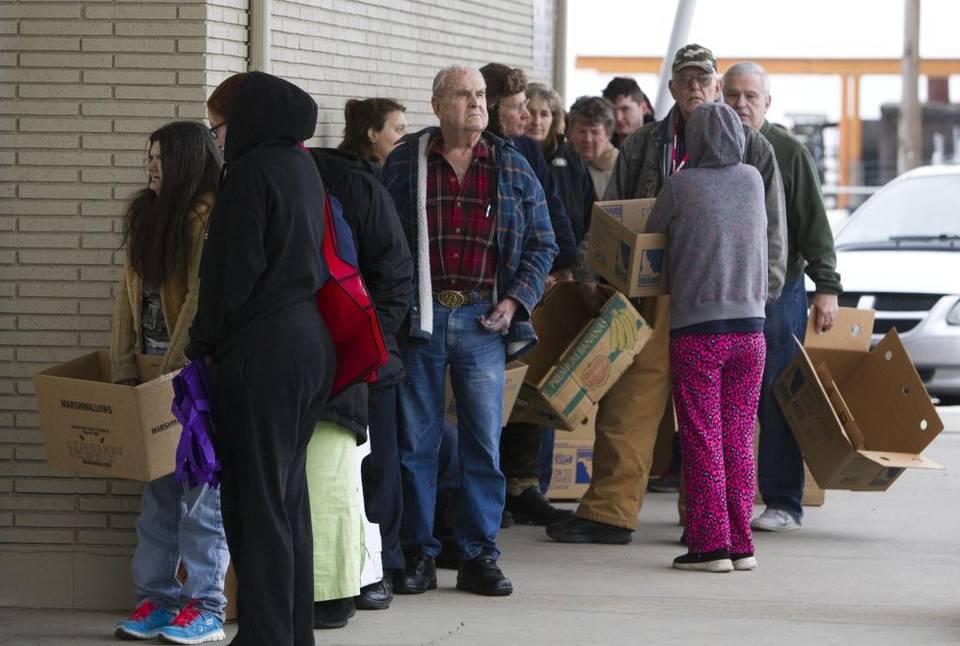They gave away eight hot dogs and eight bags of food, said Royce Wright, who pastors Oasis Worship Center, a nondenominational descendant of a church he and Carol established in 1982.
“The church was going for a while, and my wife and I had determined we wanted to help our community and not just be like a lot of organizations where you just tell them to send money,” he said. “We wanted to have an effect on people. Because the guy I work with (God) thinks people are pretty important.”
Last year, Oasis gave food to more than 68,000 people, Wright said. Oasis is a “choice pantry” — meaning people don’t just receive a bag of food when they show up. They grab shopping carts and form a line to pick out a variety of items: fresh or frozen fruit and vegetables, meats, grains, etc. Volunteers and employees hand out quantities based on the number of people in each household. The process repeats every Wednesday and Thursday.
The rest of the time, Wright and his team scour for food. They get it from a variety of sources, including The Idaho Foodbank, local grocery stores and farmers.
“We gather food all week long to get rid of food,” Wright said.
LOGISTICS AND OUTREACH
The Great Recession is officially over, but the lines for free food keep getting longer.
This is true across Idaho, not just at Oasis. Last year, The Idaho Foodbank, which distributes food to satellite pantries across the state, delivered almost twice as many meals as in 2010.
The food bank distributed almost as much food over the last six years as it did its first quarter-century of existence, spokesman Mike Sharp said.
Part of this increase comes from the supply side. Simply put, The Idaho Foodbank and the pantries it supplies are better at getting food to people who need it. Some of that is due to logistics and some is because of programs such as Backpack and Picnic in the Park, which provide schoolchildren with food on the weekends and during the summer, as well as Mobile Pantry, which sends a truckload of food to rural towns and places that might not have a permanent pantry.
“You’re talking thousands of pounds of food that is being distributed that otherwise wouldn’t have reached those people,” Sharp said.
FOOD INSECURITY: THE STATE OF BEING WITHOUT RELIABLE ACCESS TO A SUFFICIENT QUANTITY OF AFFORDABLE, NUTRITIOUS FOOD.



